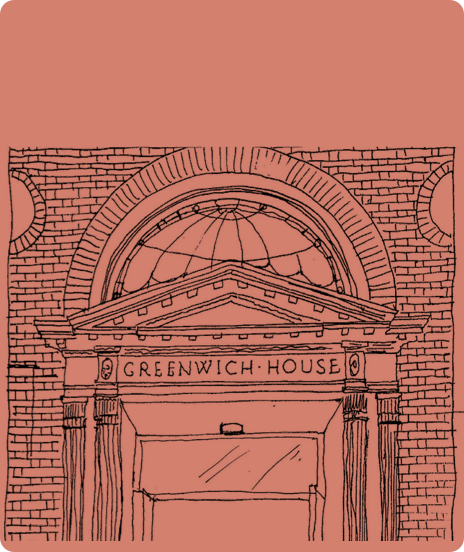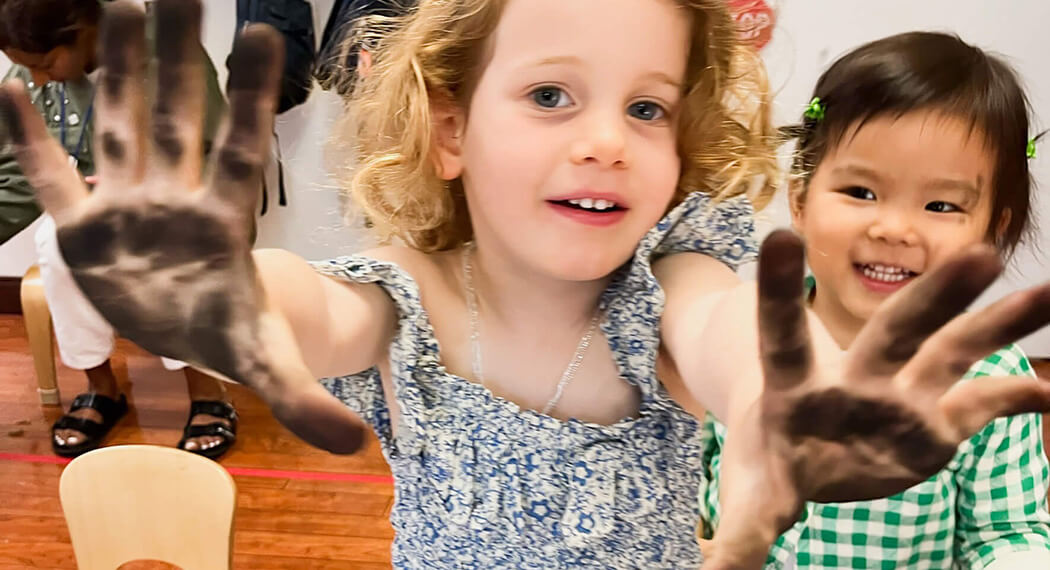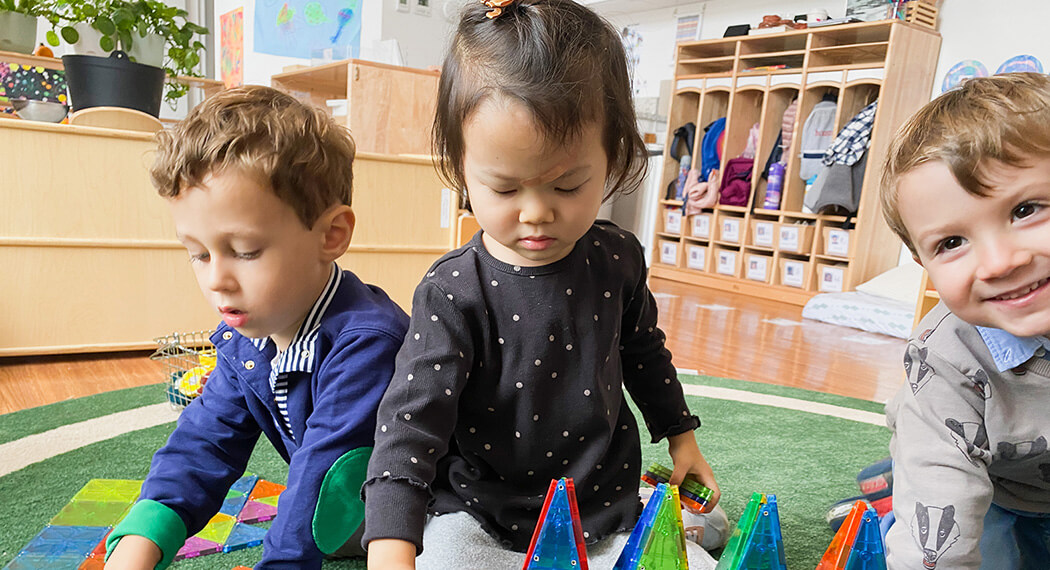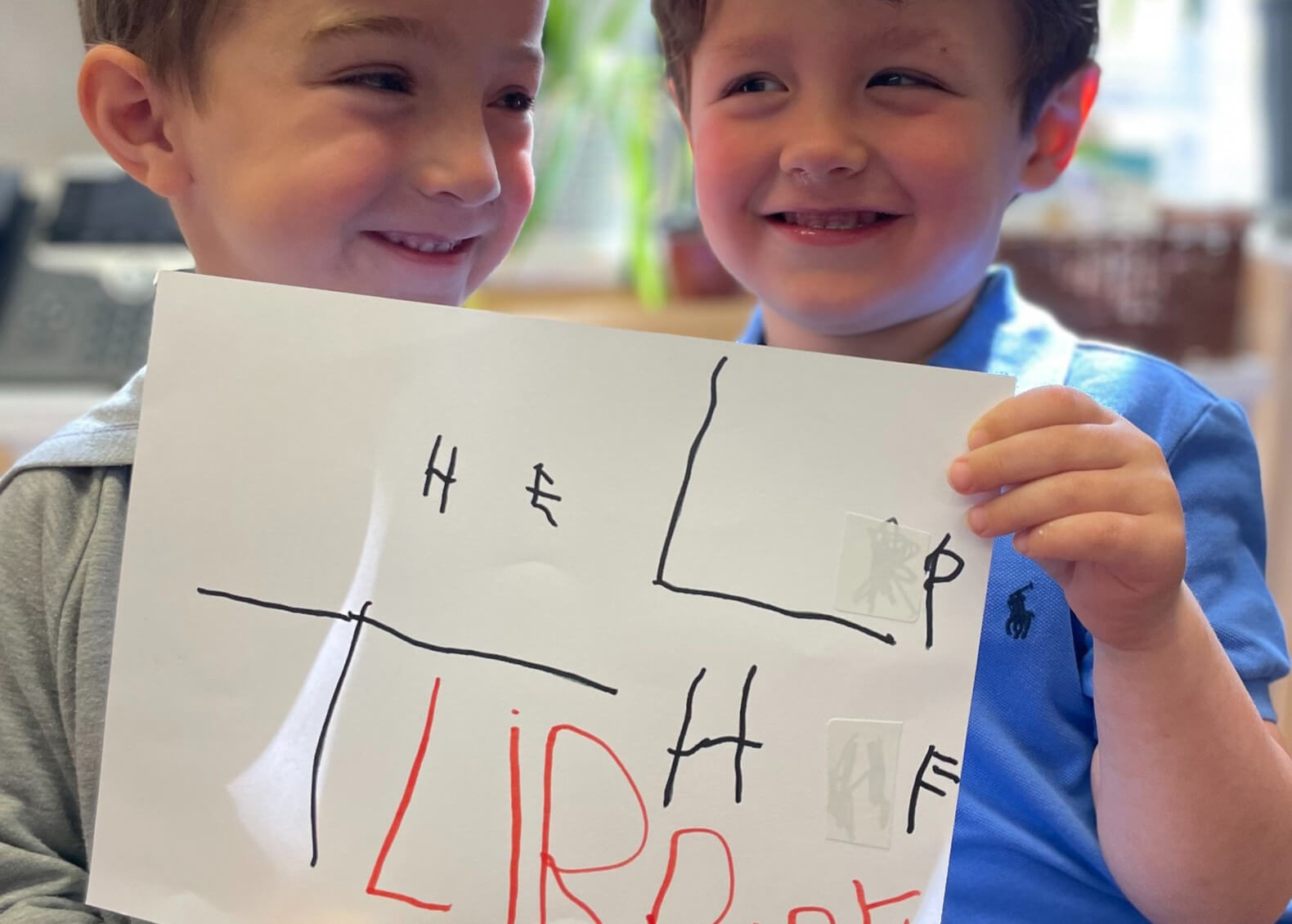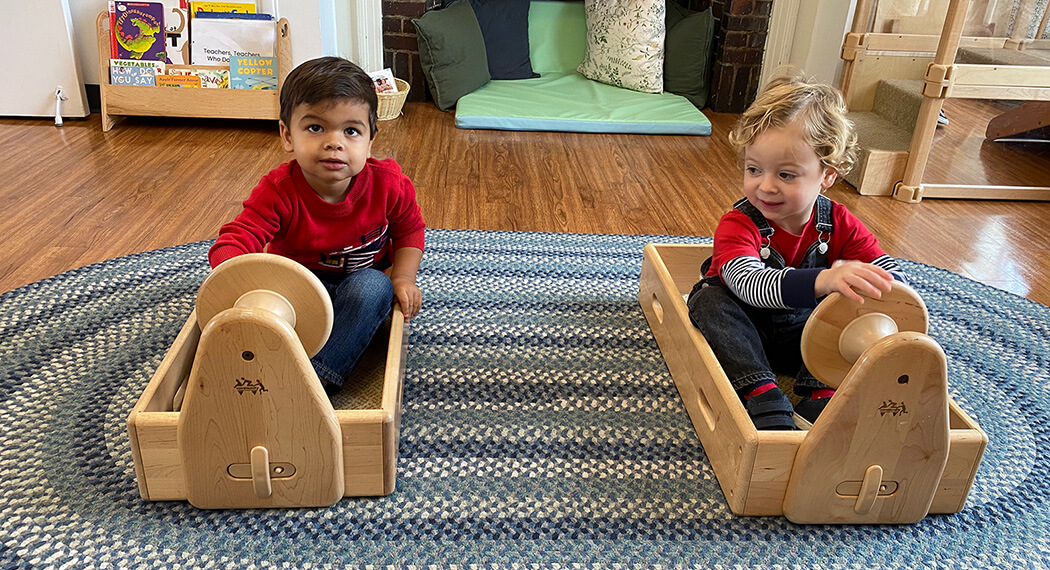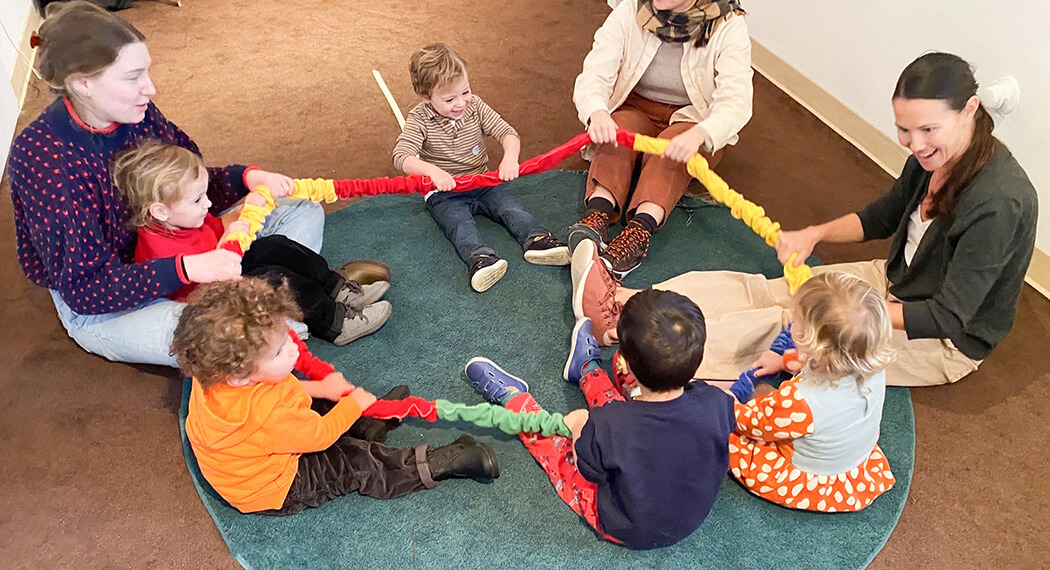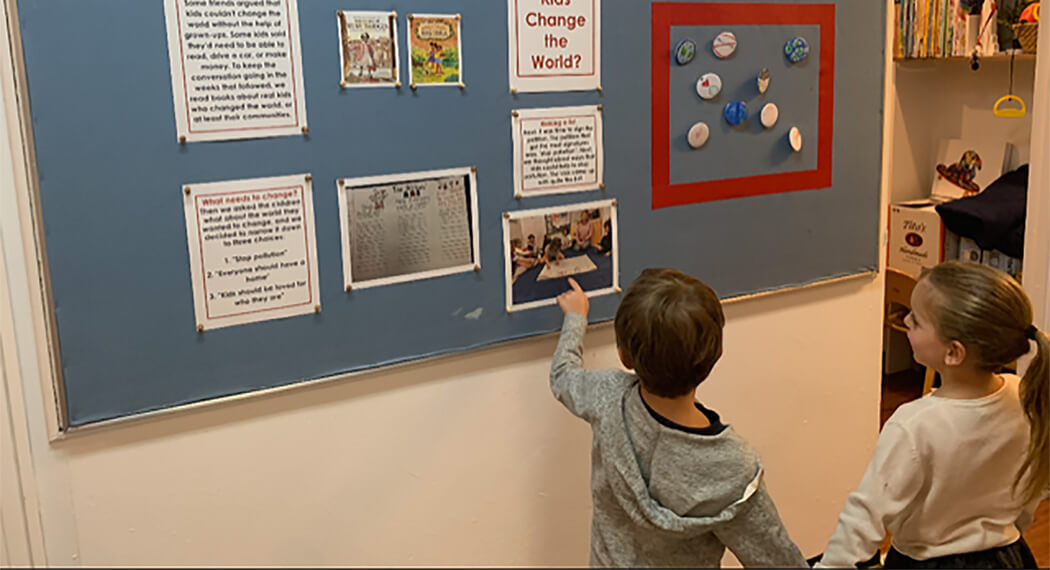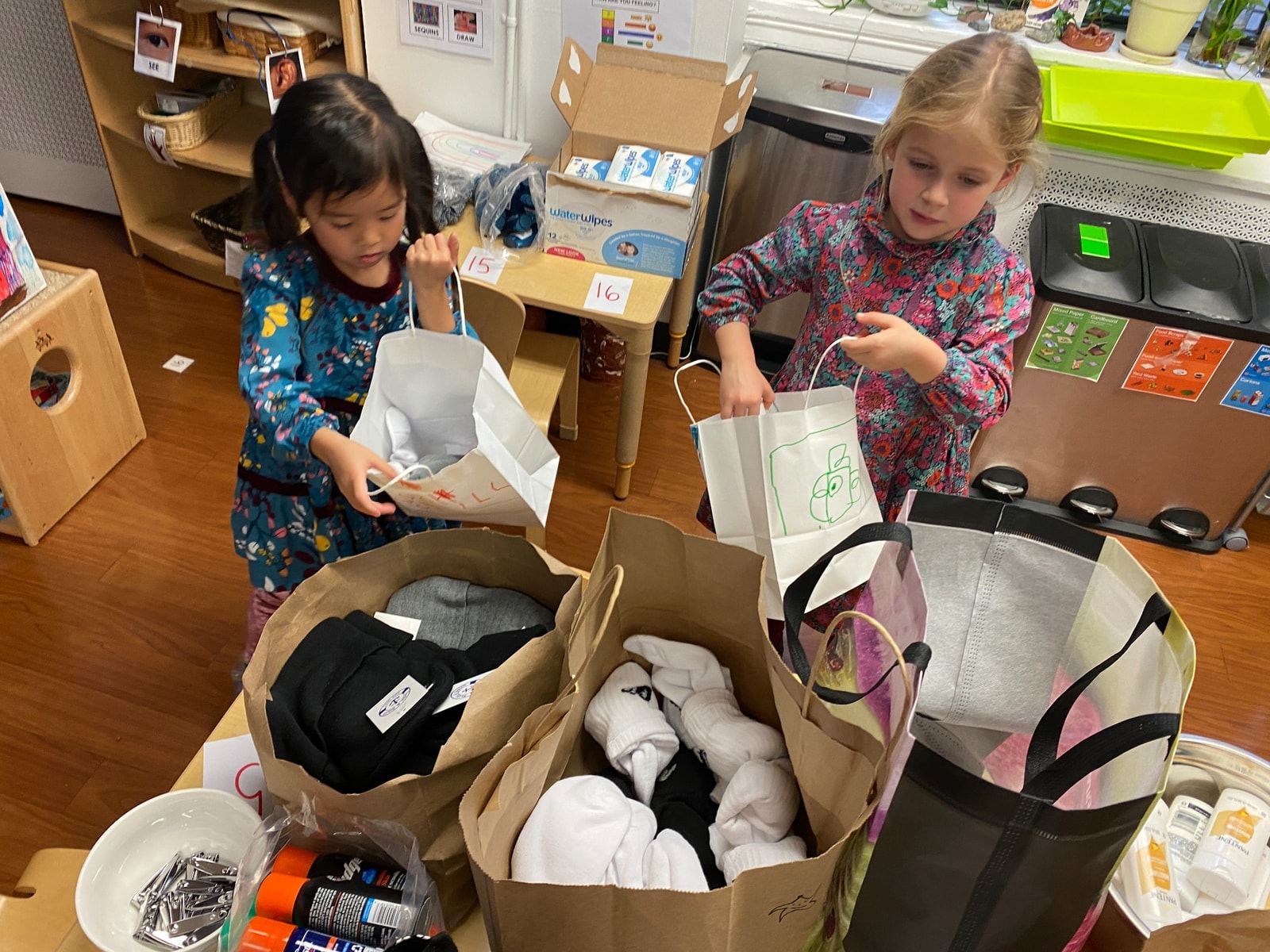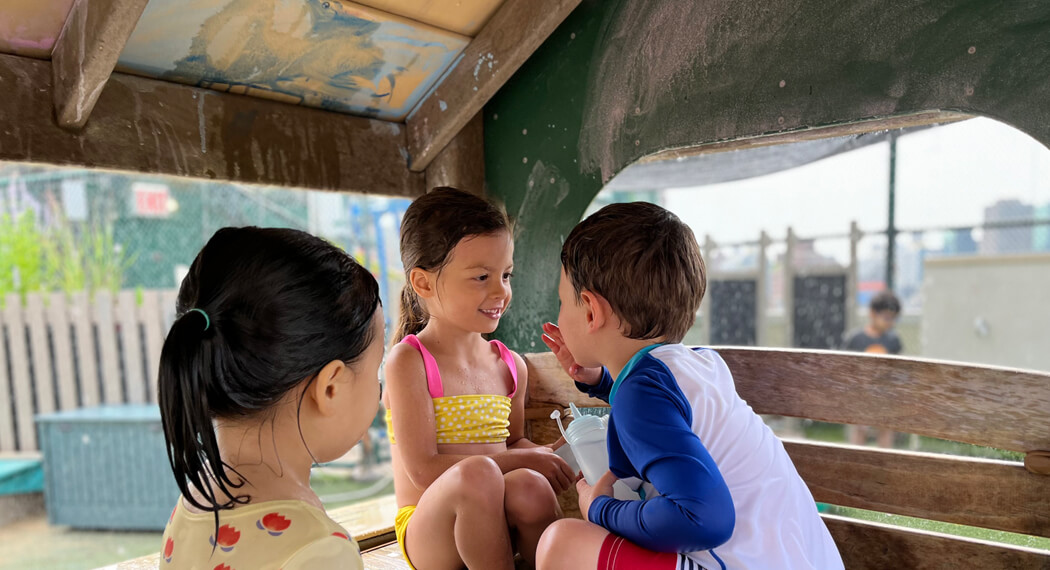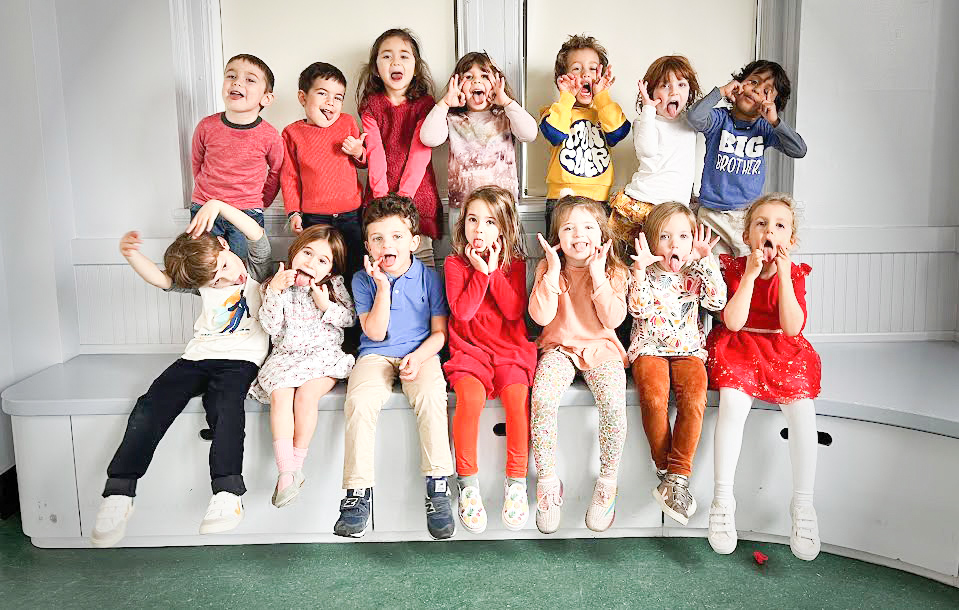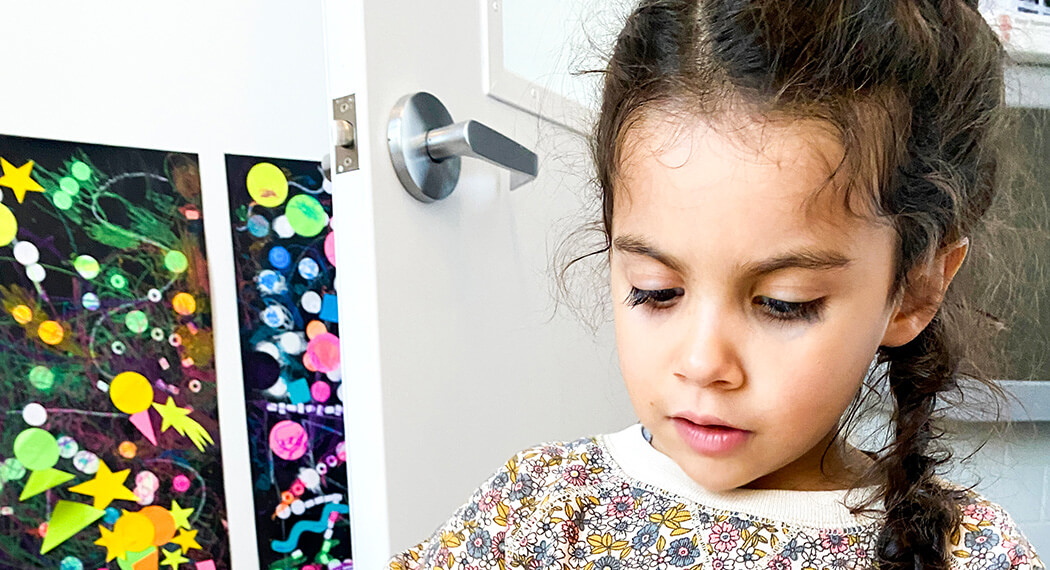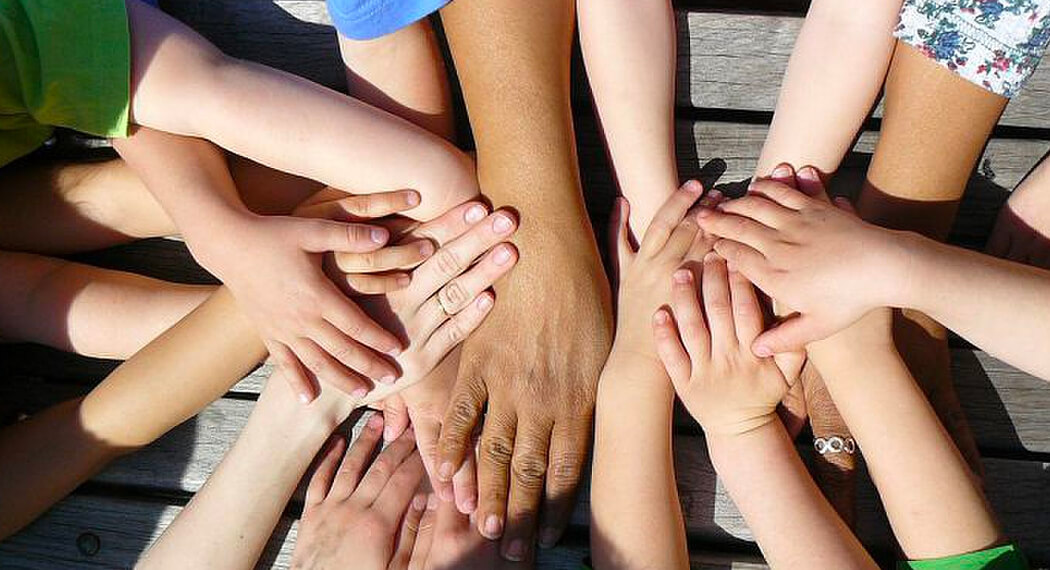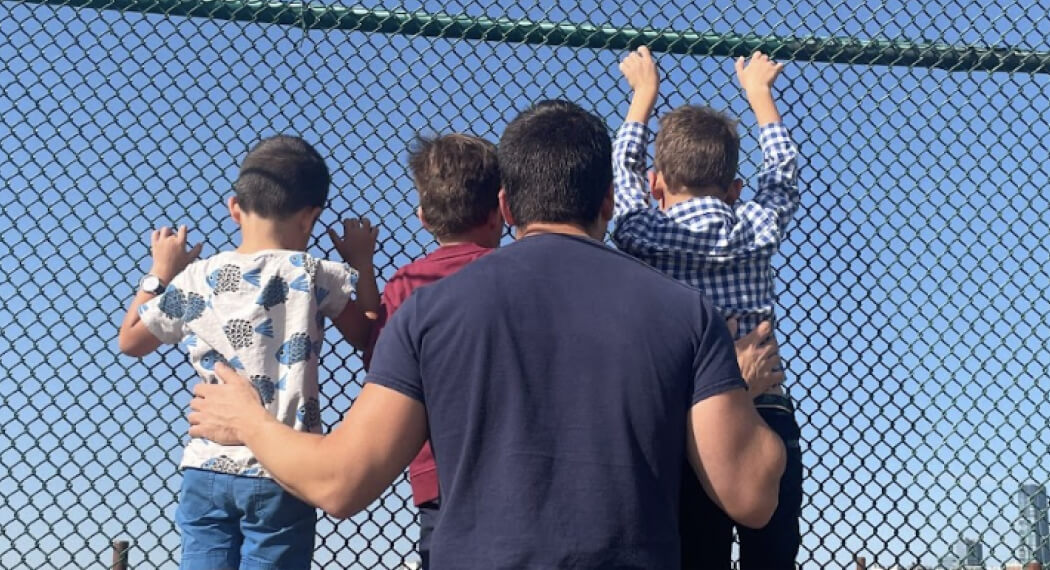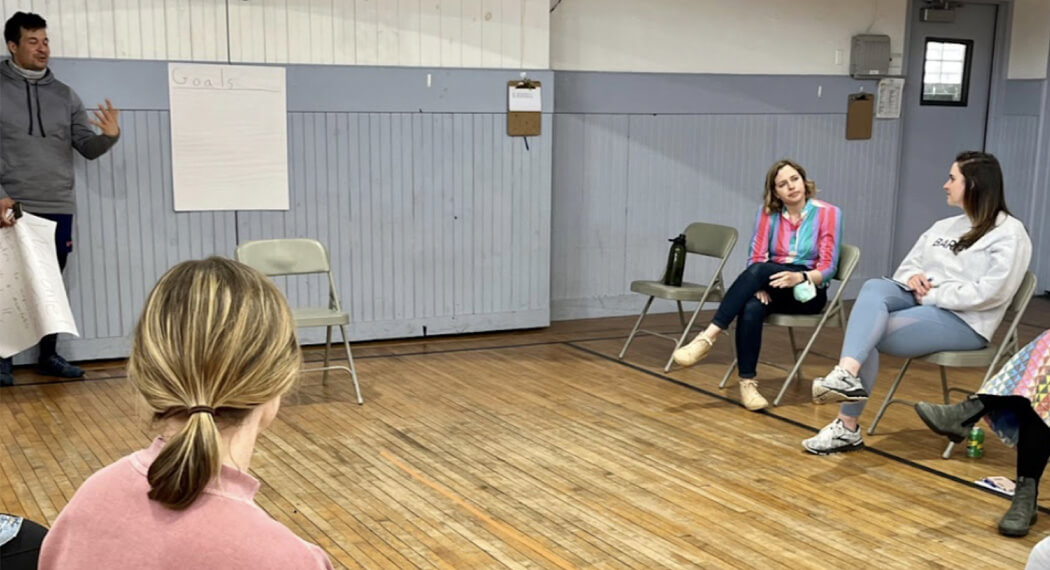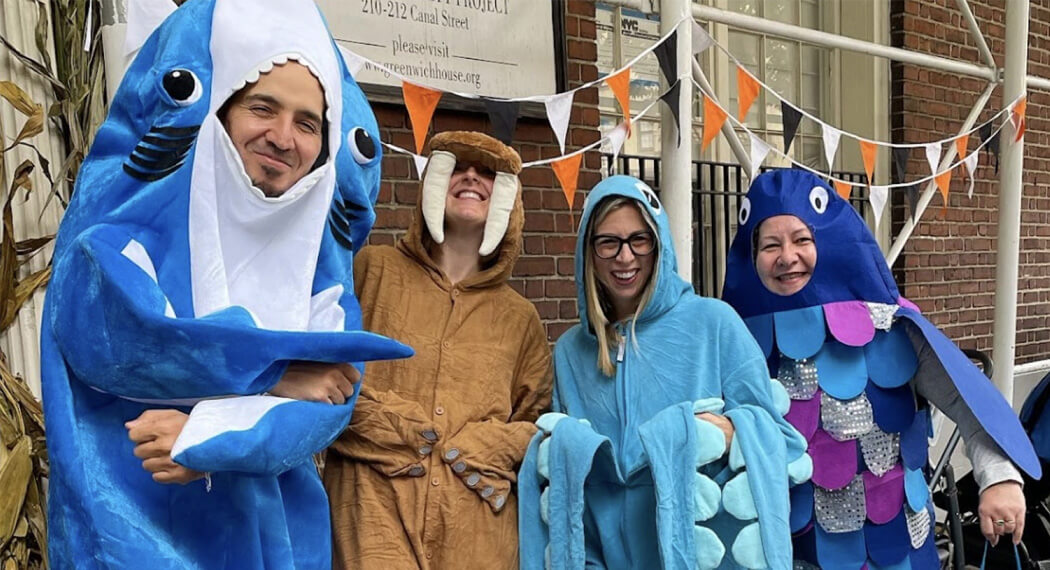Meeting
Meeting is a time for the whole class to come together. During meeting, we are focused on community-building and conversation.
Our meeting routine includes: singing a hello song, reading the schedule, having a conversation, and heading to snack.
Our conversations include topics related to curriculum, discussions about classroom norms or routines, and important messages about the day.
Students practice raising their hands, waiting their turn, listening to their peers, and engaging in focused conversation.
Snack
Snack is another community-building time.
It’s a time for conversation, for games, and for brainstorming.
Our snack is served family-style. Students practice taking just a few pieces of snack to begin so that there is enough for everyone. Once everyone has taken what they needed, then students can go back for seconds.
Our Bookshelf
Books are an integral part of our classroom.
In the 3s/4s, we encourage students to read independently, in small groups during Open Time, and in whole group read-alouds.
While reading a book independently, students learn more about books. How are they held? In which direction do we turn the pages? How do the illustrations reflect what’s happening in the story?
When listening to a story in a group, students have conversations. They ask questions, talk to one another, and make predictions about what will come next.
Students learn to make connections between books.
Students learn to make connections between texts and their own lives.
Having a diverse selection of books and authors is important to us. When choosing books for the classroom shelf, we think about mirrors (books that reflect the reader’s experience and identity) and windows (books that reflect an experience or identity that is different from the reader’s).
Social-Emotional Learning
By the 3s/4s, students have had practice being in a group with others. We build on that foundation by actively involving the children in community-building.
Being a community means having a set of rules that we all follow.
Being a community also means taking care of each other.
Students learn to be more independent in their social problem-solving. We encourage them to tell one another what they need.
In the 3s/4s year, students begin to seek power socially. This might look like excluding others (“You can’t play with me” or, “No boys allowed”).
We help students find positive ways to exert social power, like advocating for each other. We read books featuring characters who are powerful in their kindness towards others.
Seeking social power and agency also looks like play that features superheroes, good guys/bad guys, weapons, or jail.
We set up boundaries around this play, so that everyone involved feels safe. This includes: deciding who is playing and who is not, talking about the rules of the game ahead of time (“Can you touch each other in this game?”), and setting up a routine of checking in with peers regularly (“Do you still like this?”).
We find gentle ways to remind children that these themes reflect real-world experiences.
3s/4s Math
Students at this age are developing their understanding of quantity. This means knowing that saying the word “two” or reading the numeral “2” is equivalent to two objects.
We count formally and informally throughout our day together.
We expose students to written numerals in the classroom. Numerals are seen on materials, on our recipes, and in books, among other places.
Some 3s/4s math skills include:
One-to-one correspondence – when counting a set of objects, each individual object is counted once and only once
Comparisons – which group of objects has more or less? How do you know?
Cardinality – when I count a group of objects, the last number I say is equivalent to the total number of objects
Geometry – recognizing shapes and their characteristics
3s/4s Letters and Writing
Students begin to recognize and identify letters – especially the letters in their name.
Students begin to recreate letters. They might use art tools, building materials, or even sensory materials.
We practice manipulating the sounds in words by singing and creating rhymes.
We encourage students to practice writing letters informally and playfully: signing their artwork, making signs for the classroom, voting for the class name, or creating a menu for the play kitchen.

